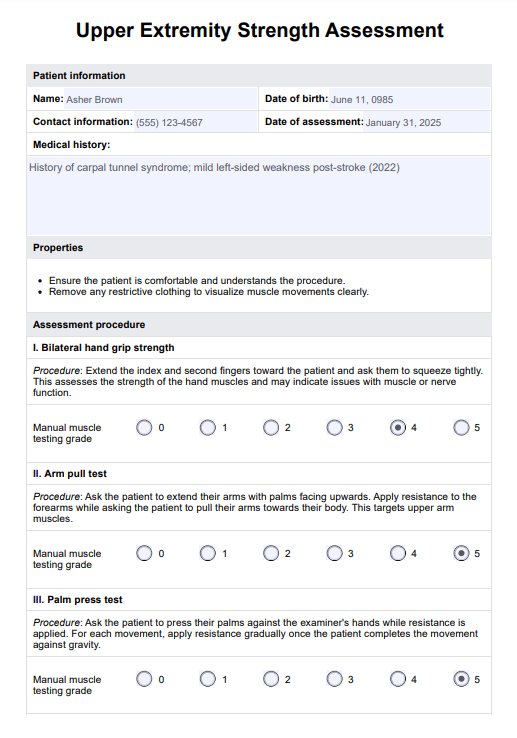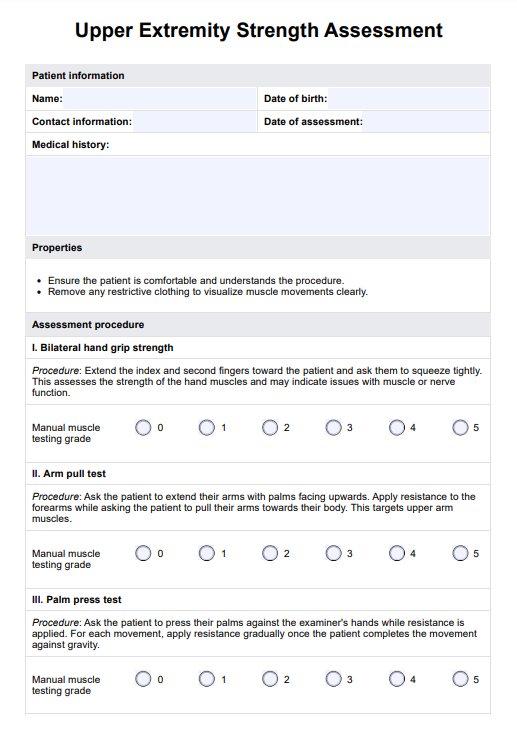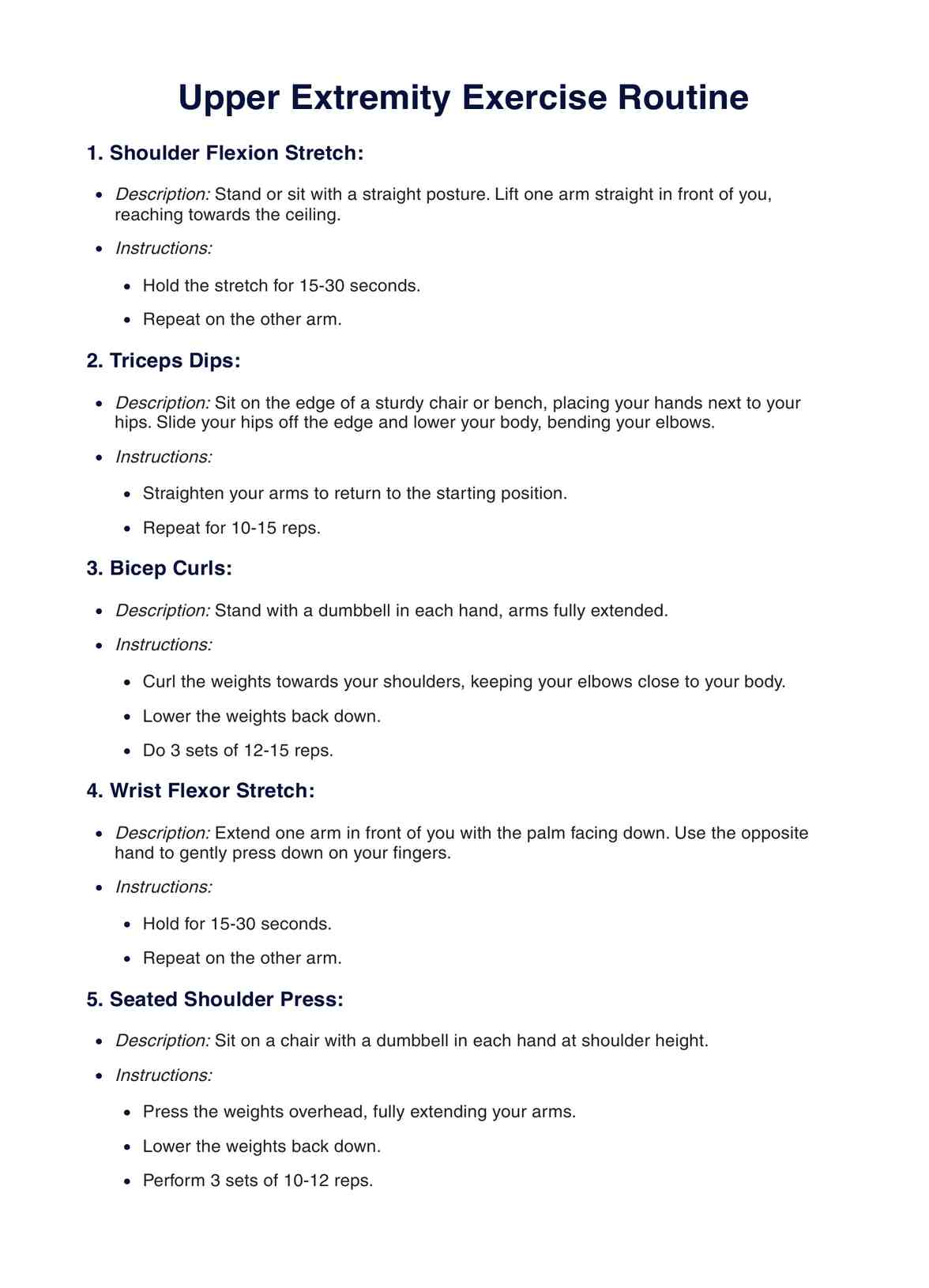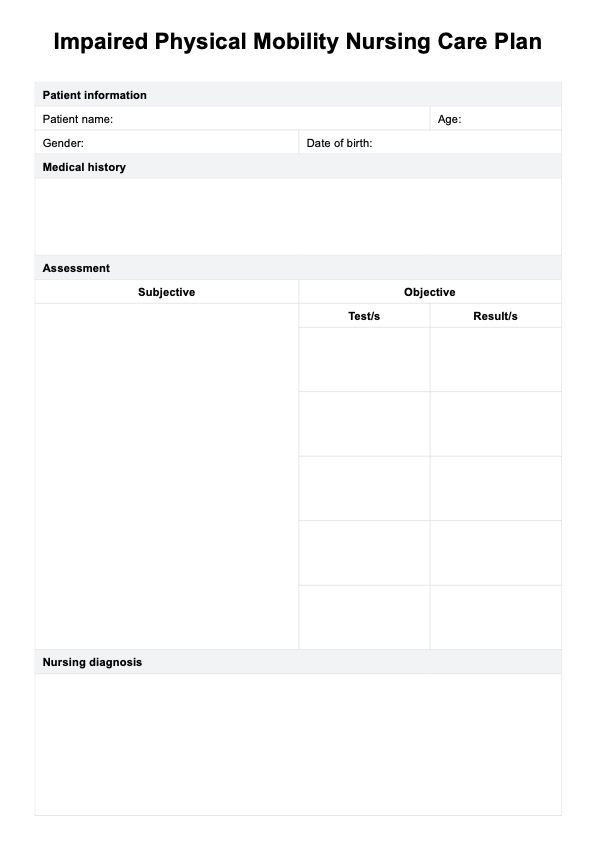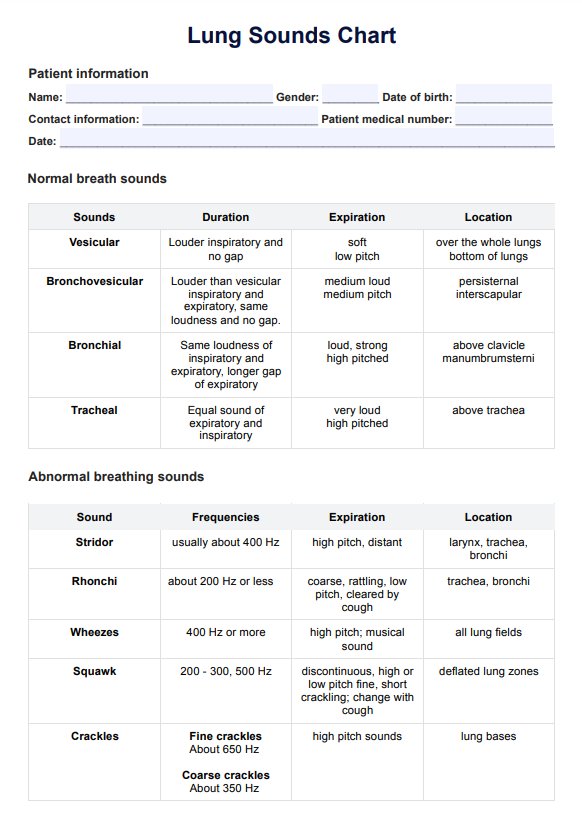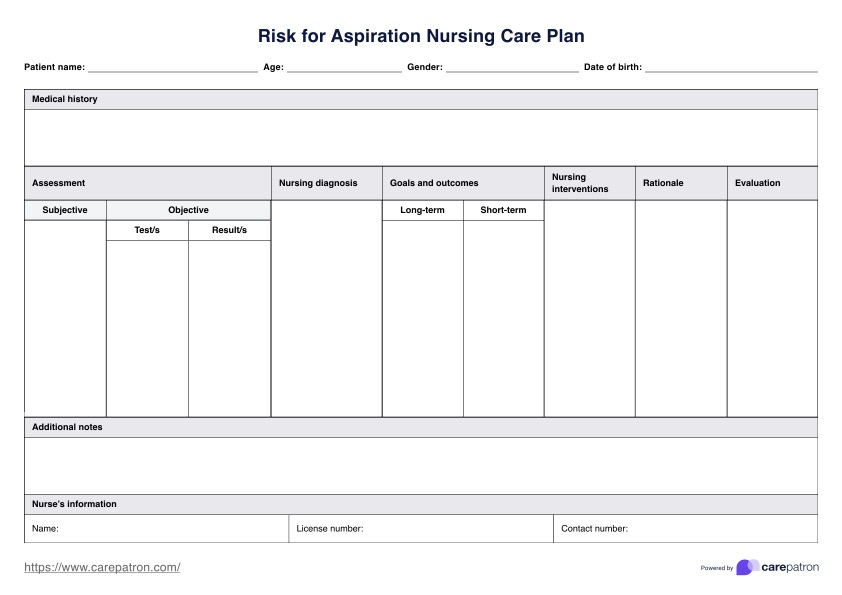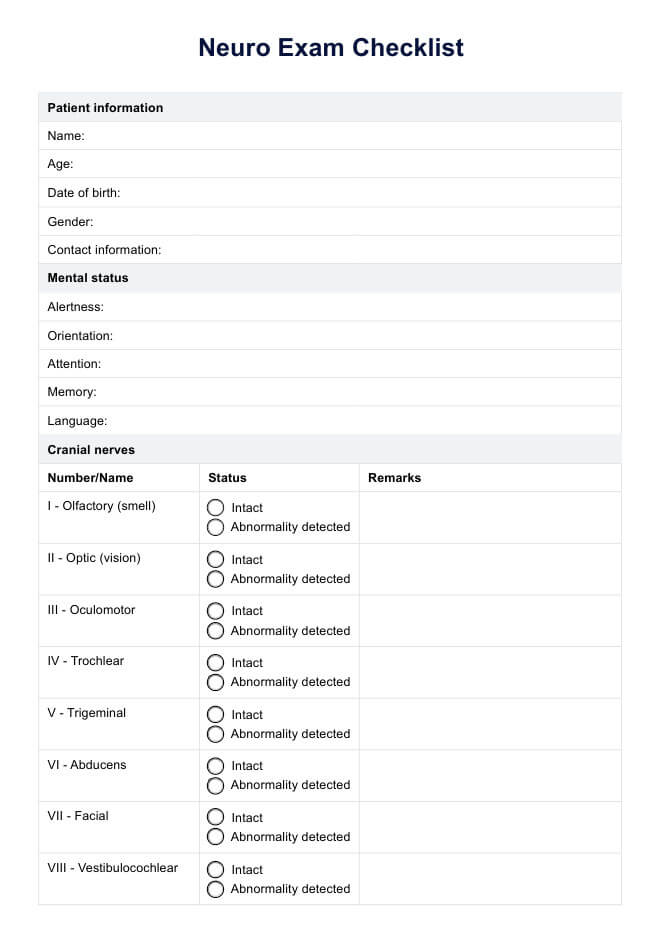Upper Extremity Strength Assessment
Effectively assess upper extremity strength to gauge physical abilities and use Carepatron's free Upper Extremity Strength Assessment template.


What is an Upper Extremity Strength Assessment?
An Upper Extremity Strength Assessment is a clinical evaluation crucial for diagnosing and monitoring conditions that impair the musculoskeletal and neurological functions of the arms, shoulders, and hands. This assessment primarily utilizes Manual Muscle Testing (MMT) (Naqvi & Sherman, 2023), the most commonly accepted method, to evaluate muscle strength. During MMT, an examiner applies resistance to muscle groups while a patient performs specific movements. Strength is graded on a scale from 0, indicating no muscle contraction, to 5, which represents normal muscle strength capable of full resistance.
The procedure focuses on crucial muscle groups responsible for functions tied to important spinal nerve roots, such as shoulder movement, elbow flexion, and wrist extension. For instance, reduced strength in these areas may suggest pelvic girdle weakness or pinpoint neurological conditions affecting the spinal nerve roots involved in upper limb function. By assessing muscle contraction and strength, medical professionals can detect early signs of muscle weakness, which is often a symptom of underlying neuromuscular issues.
Results from muscle strength testing are integral in creating a comprehensive profile of a patient's functional capabilities, guiding further diagnostic testing or rehabilitation approaches. For example, inconsistencies in muscle strength grading might indicate the need for additional neurological evaluations or imaging studies to assess the integrity of muscles and surrounding structures. Ultimately, an Upper Extremity Strength Assessment provides essential insights into a patient's muscle functionality, aiding in the effective management of recovery and rehabilitation strategies.
Upper Extremity Strength Assessment Template
Upper Extremity Strength Assessment Example
How does our Upper Extremity Strength Assessment template work?
Here's a step-by-step guide tailored for you. Our template is free and easy to use.
Step 1: Access the template
To begin, simply click "Use template" on this page. This action will direct you to Carepatron's app, where you can immediately start utilizing the assessment tool. For a PDF copy, click "Download."
Step 2: Introduce the assessment to the patient
Explain the purpose and process of the assessment to the patient, ensuring they understand what to expect and how it will help manage their care.
Step 3: Conduct the assessment of the patient
Perform the manual muscle testing and other strength evaluations as outlined in the template, observing and noting each muscle group's performance. You can also use the template to include two more tests to assess your patient's upper extremity strength.
Step 4: Record findings
Accurately document the patient’s responses and strength levels in each test section provided in the template, ensuring all relevant data is captured.
Step 5: Gather and interpret the results
Review and analyze the recorded data to determine muscle function levels, identifying any areas of concern or strength deficits.
Step 6: Provide patient education and next steps
Discuss the assessment results with the patient, offering guidance on any recommended treatments or next steps for rehabilitation and recovery.
Scoring and interpretation
The Upper Extremity Strength Assessment utilizes Manual Muscle Testing as its primary method for evaluating muscle strength. Each muscle group is tested against resistance, with strength scored on a scale from 0 to 5. A score of 0 indicates no muscle contraction, 1 signifies trace contraction without limb movement, 2 allows movement with gravity eliminated, and 3 represents movement against gravity.
A score of 4 means the limb can move against some resistance, and a perfect 5 signifies normal strength, where the limb moves against full resistance. This scoring system helps medical professionals identify specific areas of weakness and the degree of impairment.
Interpretation of these scores is crucial for diagnosing underlying conditions, planning treatment, and setting rehabilitation goals, providing a clear pathway to enhance patient care and recovery outcomes.
Benefits of using this assessment
Using the Upper Extremity Strength Assessment offers significant benefits for medical professionals, particularly when diagnosing and managing conditions affecting muscle strength. This assessment allows for a comprehensive evaluation of muscle groups across both upper and lower extremities, including shoulder girdle weakness, finger flexors, and wrist extensors. It is especially valuable in cases of suspected neurologic disease, providing insights that are essential for accurate diagnosis and treatment planning.
The methodology employed, focusing on movements like the palm facing upwards, ensures that each muscle group's range of motion and strength are meticulously assessed. This approach yields valid and reproducible results, essential for physical therapy regimens aimed at improving poor endurance and overall muscular function.
By measuring muscle strength through more precise methods that require careful technique, healthcare providers can differentiate between true weakness and limitations due to pain or lack of effort. This distinction is crucial in crafting effective treatment strategies. Additionally, the structured nature of this assessment ensures that all relevant data is gathered systematically during the physical exam, aiding in the comprehensive evaluation and monitoring of both upper and lower extremities over time. This level of detailed assessment helps refine therapy approaches, enhance patient recovery outcomes, and ensure targeted interventions are implemented effectively.
Reference
Naqvi, U., & Sherman, A. L. (2023, August 29). Muscle strength grading. StatPearls Publishing. https://www.ncbi.nlm.nih.gov/books/NBK436008/
Commonly asked questions
Normal findings in an upper extremities assessment typically include a muscle strength rating of 5/5, indicating full muscle strength with the ability to resist strong opposition. This demonstrates the individual’s capacity to perform a full range of motion against gravity and resistance without difficulty.
The assessment of upper extremity function evaluates the ability of the shoulders, arms, wrists, and hands to perform tasks that require varying degrees of strength, flexibility, and coordination. It is crucial to determine how musculoskeletal and neurological conditions affect daily living activities.
A muscle strength score of 4+/5 indicates that the individual can perform movements against resistance but not at full strength, showing slightly less than normal capacity. This score suggests that while the muscle is strong, it cannot withstand maximum resistance.
The functional UE (Upper Extremity) strength test assesses the practical strength and endurance of the arms and hands when performing daily activities. This test is especially important in physical therapy to tailor rehabilitation goals and measure progress in real-world tasks.


